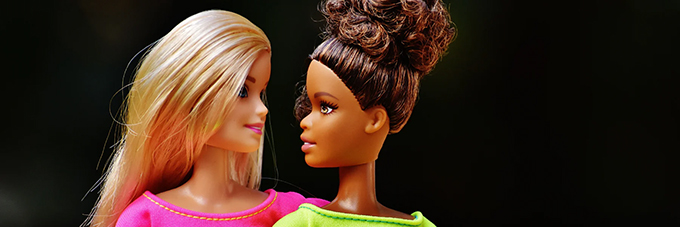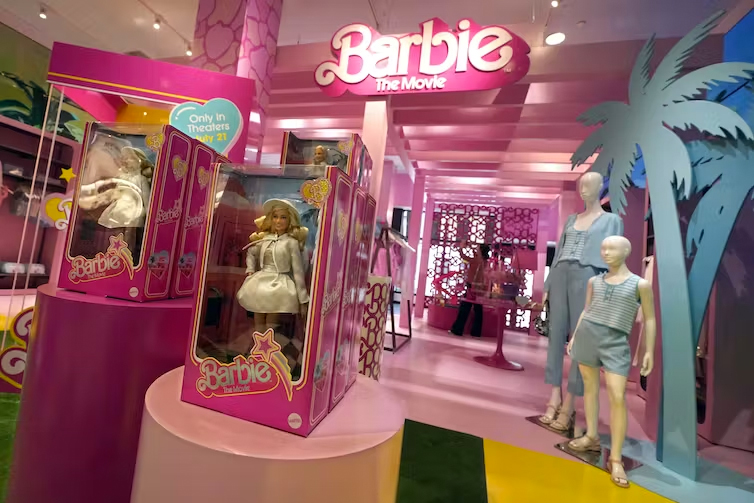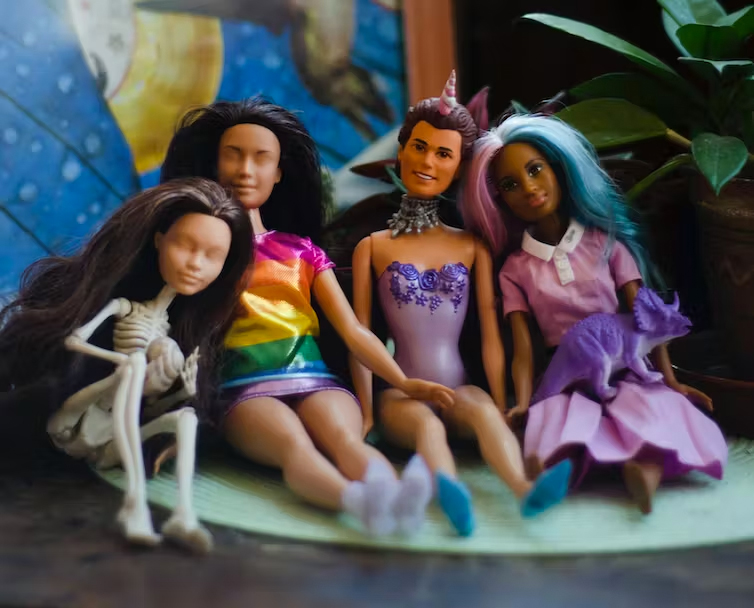
With the blockbuster success of the Barbie movie and the related expansion of Barbie branding and merchandising, educators and parents may find themselves wondering about Barbie’s original purpose: as a child’s toy.
Barbie has become an icon since her introduction in 1959. On the positive side, dolls like Barbie can serve as a canvas for imaginative storytelling and role-playing.
Children often create elaborate scenarios, dialogues and relationships among their dolls, and they refer to the thoughts, emotions and desires of themselves and others while playing, supporting language and emotional development. Dolls often act as catalysts for children to explore different roles (or careers) and social scenarios, potentially encouraging aspirations and broadening horizons.
Additionally, Barbie play can promote fine motor skills as children dress and accessorize the dolls. Dolls can also facilitate social interaction when shared with peers or caregivers.
However, there is a potential downside. Barbie dolls come with predefined appearances and characteristics, which can limit the range of narratives a child may explore. There is also marketing of an entire “Barbie world” of branded objects, which many parents may choose not to invest in for financial or environmental reasons.
In the face of consumer pressures, while also being mindful of educational aspects of play, parents or caregivers can consider integrating open-ended everyday objects and versatile toys into children’s play with Barbie or other commercially successful toys.
This is a rewarding approach that promotes growth, creative thinking, adaptability and a sense of wonder.
Addressing stereotypes
While Mattel, the maker of Barbie, today features Barbies featuring multiple skin tones, hairstyles and body types, the original Barbie may reinforce certain stereotypes, particularly related to whiteness and gender roles. And while the Barbie brand has evolved, many unfortunate decisions were made historically.
For example, in 2014 Mattel apologized after readers complained about a book where Barbie as a computer engineer waited for males to save the day from computer difficulties.
Mattel’s release of Teen Talk Barbie in 1992 sparked controversy due to a particular phrase: “Math class is tough!” The phrase perpetuates the stereotype that struggling with math is expected or even normal.
The doll inadvertently contributed to a culture that discourages girls from pursuing mathematics and other STEM fields, reinforced gender biases and perpetuated misconceptions that can have far-reaching consequences on children’s educational choices and career aspirations.
When children play with dolls and toys, they are not just having fun, but also absorbing messages and attitudes from their playthings.

Beyond Barbie dolls, a whole range of Barbie merchandise exists. Barbie-themed items at Bloomingdale’s, in New York, on July 20, 2023. (AP Photo/Richard Drew)
Influence on gendered outcomes
Researchers name play in early childhood as one of the powerful early influences on later gendered outcomes. The choice of toys and play materials can contribute to how adults reinforce gendered patterns and habits, encouraging boys and girls to develop different interests and skills.
For example, psychology researchers Emily F. Coyle and Lynn Liben explored the impact of gendered toy packaging in five-year-old children’s STEM play with their mothers. Mothers and their child (31 daughters; 30 sons) were randomly assigned to play with a mechanical toy packaged for girls (GoldieBlox) or boys (BobbyBlox).
They discovered children’s independent play varied with game packaging. When preparing for the play, mothers who were provided BobbyBlox built more toy pieces than those given the GoldieBlox.
Also, mothers built more with their sons, whereas they focused more on reading the toy’s instructions with their daughters. Further exploration of young children’s early STEM play patterns may effectively influence later outcomes.

Children may work out a range of imaginitive stories and scenes with Barbie and Barbie-like dolls. (Саша Круглая)
Creative fusion in play
Encouraging children to modify and personalize their play experience in a variety of ways can mitigate some of the stereotypical gender-specific effects of Barbie-like dolls.
Repurposing common materials to craft intricate settings and props, children are empowered to envision boundless scenarios. Creative fusion allows children to transform ordinary items into extraordinary elements within Barbie’s world. For example:
- Through the use of open-ended materials such as cardboard, fabric and building blocks, children can construct intricate scenes and environments that serve as backdrops for Barbie-like dolls’ adventures. Cardboard boxes, for example, can be resourcefully repurposed into cars, planes or magical chariots.
- Tiles, blocks (like Lego blocks) or other structural building materials can be combined with Barbie play. Designing structures, experimenting with balance and creating functional objects instils foundations for science, technology, engineering and mathematical learning.
- By integrating natural elements like pebbles, leaves and twigs, adults can invite children to construct scenes that enrich the narrative with a sensory and tactile dimension. Natural materials such as sticks and leaves can be transformed into miniature furniture, bridges or forest habitats.
The personalized aspect of using everyday materials to create accessories or outfits for dolls, or combining toys to allow for envisioning new worlds, fosters a sense of autonomy in children and instils a sense of ownership and pride in their creations.
As children engage in collaborative play and work together to construct shared goals, they practice communication, teamwork and negotiation.
Using ordinary items also nurtures an early awareness of environmental consciousness in children, teaching them the value of repurposing materials, reducing waste — and the wondrous capacity of imaginative play.
Author Bio: Ozlem Cankaya is Assistant Professor, Early Childhood Curriculum Studies at MacEwan University